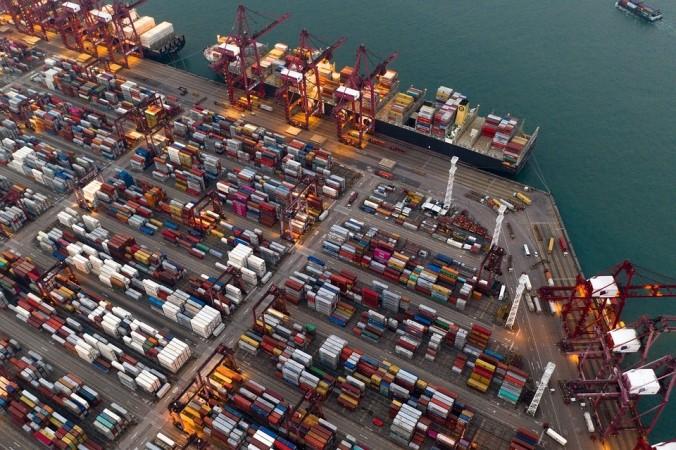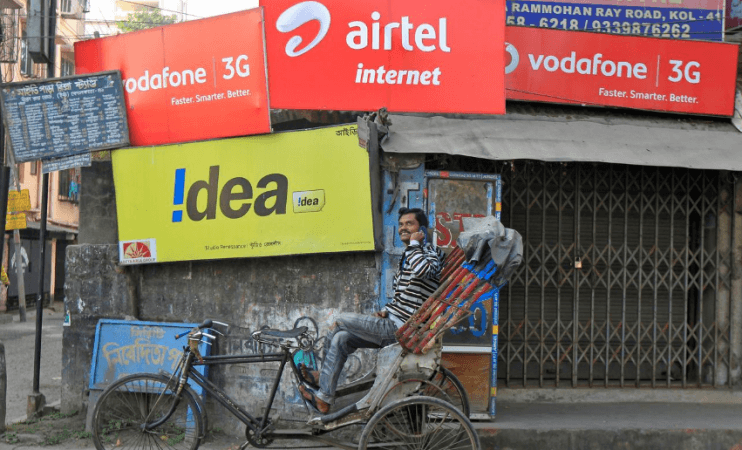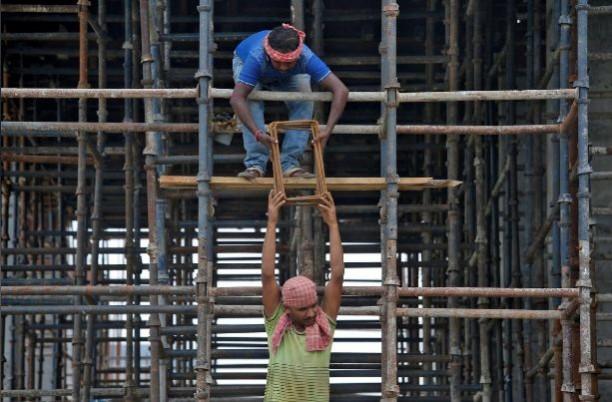The GDP projection for the next fiscal in the Economic Survey 2019-20 marks a sharp decline from the estimate of 7 percent growth for the current financial year in last year's Economic Survey.
However, the projection suggests that the slowdown has bottomed out and growth would pick up in coming quarters.

The higher GDP forecast for FY21 has come at a time when the Central Statistics Office (CSO) has estimated the real GDP to grow at 5 per cent in the current financial year. The GDP in July-September had fallen to over six-year low at 4.5 per cent putting pressure on the government to take measures to revive it.
The survey has also suggested relaxing fiscal deficit target to boost growth. Presenting her maiden budget in July last year, Finance Minister Nirmala Sitharaman had lowered fiscal deficit target to 3.3 per cent from 3.4 per cent for FY20.
"The growth forecast is aspirational. However, one should also agree that slowdown in the Indian economy has bottomed out and we have already seen some kinds of recovery from the past quarter but the extent of recovery is not so strong," said NR Bhanumurthy of the National Institute of Public Finance and Policy (NIPFP).
Measures for a $5 trillion economy
The Economic Survey noted that the year 2019 was a difficult year for the global economy with world output growth estimated to grow at its slowest pace of 2.9 per cent since the global financial crisis of 2009.
With wealth creation being the survey's primary focus, the survey suggests that pro-business policies need to be implemented to achieve the target of a $5 trillion economy.

The survey has asked for an urgent need to remove the red tape at ports to promote exports apart from eliminating other business hindrances such as registering property, paying taxes and enforcing contracts.
India's infrastructure sector
The Economic Survey gave a detailed analysis of the trends in India's infrastructure sector. The Survey emphasized that investment in infrastructure is necessary for growth. Since the provision of adequate infrastructure is essential for inclusive growth, India recently launched the National Infrastructure Pipeline (NIP) for the period FY 2020-2025.
As per the NIP, Central Government (39 per cent) and State Government (39 per cent) are expected to have equal share of funding of the projects followed by the private sector (22 per cent).
The Economic Survey gave an overview of sectoral developments relating to Railways, Road Transport, Civil Aviation, Shipping, Telecom, Petroleum and Natural Gas, Power, Mining, Housing and Urban Infrastructure. The Economic Survey noted that, road transport is the dominant mode of transportation in terms of its contribution to Gross Value Added (GVA).
In 2017-2018 the share of the transport sector in the GVA was about 4.77 per cent of which the share of road transport is 3.06 per cent followed by Railways (0.75 per cent), air transport (0.15 per cent) and water transport (0.06 per cent). Total investment in the roads and highways sector has gone up more than 3 times in five year period of 2014-15 to 2018-19.

The Survey marked that during the year 2018-19 Indian Railways carried 120 crore tones of freight and 840 crores passenger making it the world's largest passenger carrier and fourth-largest freight carrier.
Taking a comprehensive view of Civil Aviation the Survey observed that India has 136 commercially managed airports by Airport Authority of India and 6 under Public-Private Partnerships for operation, maintenance and development of airports.
A total of 43 airports have been operationalized since the scheme for operationalizing unserved airports (UDAN) was taken up. India stood first along with 7 other countries in airport connectivity according to the Global Competitiveness Report 2019 of World Economic Forum. To ease the strain on existing airport capacities 100 more airports are to be made operational by FY 2023-24.
The Survey noted that to continue with the high growth trajectory the Government has been providing a congenial environment so that Indian carrier double their fleet from about 680 aircraft at the close of 2019 to 1,200 by FY 2023-24.
India's telecom sector
In the Telecom Sector, the Economic Survey noted that there are four major players in the telecom sector in India today -- three in the private sector and BSNL and MTNL in the public sector.
The survey highlighted that since the price of data in India is among the lowest in the world it will help to achieve the goal of developing broad-band highways as part of the digital India campaign.

The Economic Survey observed that India is the 3rd largest energy consumer in the world after the US and China. India's energy requirement is fulfilled primarily by coal, crude oil, renewable energy and natural gas.
The Survey said that India has a refining capacity of 249.4 MMTPA and is the fourth largest in the world after the US, China and Russia. There is a need to augment refining capacity to meet the growing demand for petroleum fuels and petrochemicals.
The Survey underlined that access to electricity is necessary for making growth inclusive and for promoting ease of living. A Pradhan Mantri Sahaj Bijli Har Ghar Yojana (SAUBHAGYA) was launched on September 25, 2017, with an outlay of Rs.16,320 crores to achieve universal household electrification by providing last-mile connectivity by 31-03-2019.
India's construction sector
While giving an overview of the construction sector the Survey said that it accounts for 8.24 per cent of GDP which includes housing and employs about 12 per cent of the workforce.
The Pradhan Mantri Awaas Yojana-Urban (PMAY-U) was launched in June 2015. The Survey said that it is one of the largest housing schemes of the world covering entire urban India and is being implemented through four verticals. The scheme is moving towards achieving the vision of pucca house to every household by 2020. Thirty-two lakh houses have been completed and delivered.

The Economic Survey stated that India produces 95 minerals which include four hydrocarbon energy minerals, five atomic minerals, ten metallics, 21 non-metallic and 55 minor minerals. Mining and quarrying sector contributes about 2.38 per cent to GVA during 2018-19.
On a positive note, the Survey stated that there has been a notable turn around in mineral production because of policy reforms and production of major minerals during the year 2018-19 has recorded a growth of 25 per cent when compared to last year in terms of value.
(With inputs from IANS.)








